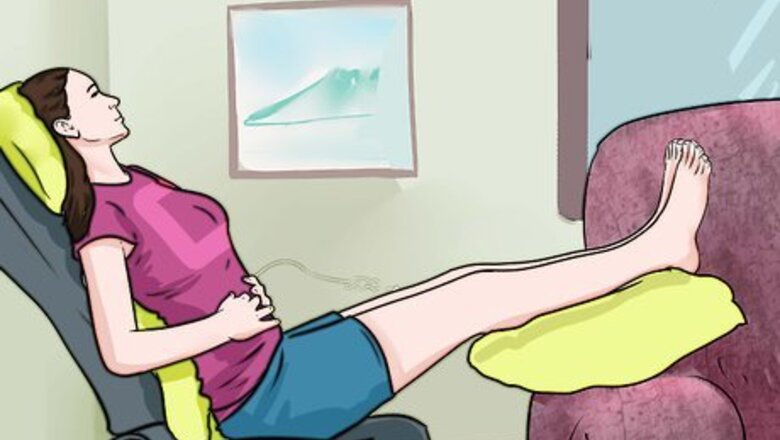
views
X
Research source
To beat piriformis syndrome, you will need to take steps to deal with pain and discomfort, follow your doctor’s treatment recommendations, and do what you can to prevent further irritation of the piriformis muscle.
Easing Pain and Discomfort
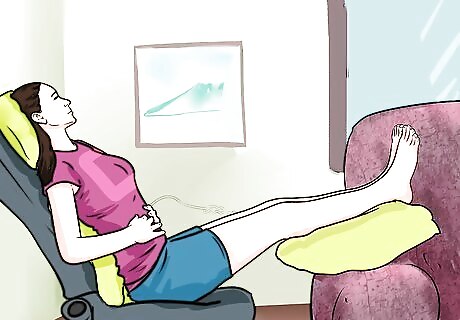
Rest your muscles. If you are having pain and discomfort from piriformis syndrome, then one of the best things you can do is rest your body. Piriformis syndrome may be the result of irritation or injury from exercise or other forms of strenuous activity. If you have a physical job or you like to exercise every day, then this advice may be a challenge for you. But it is important to rest to avoid further damage or irritation to the piriformis and to allow it to recover.
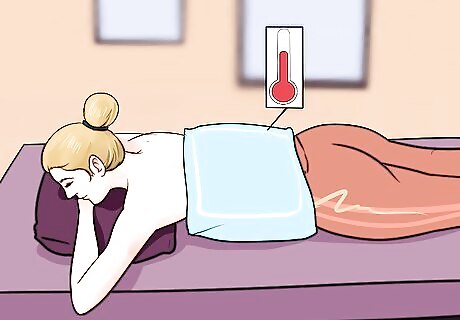
Use heat therapy. Heat therapy is an effective way to help soothe pain and discomfort caused by piriformis syndrome. Heat therapy is also an effective way to warm up your muscles before stretching them. Try using a heating pad on the affected area or take a warm bath to cover more areas at once.

Perform piriformis stretches. Certain stretches have been found to be effective at relieving some of the pain and discomfort associated with piriformis syndrome. For best results, you will need to perform the stretches three times per day. To perform a piriformis stretch, you will need to lay on the floor with your knees bent and both of your feet flat on the floor. Place one foot on the opposite knee. Then, pull that knee toward your chest, keeping it to the outside of your shoulder. By keeping your knee out to the side of your shoulder, the stretch will target your piriformis muscle.
Use a ball or roller to massage the muscle. Get a lacrosse ball or a foam roller and sit on it so it's right at the backside of your hip bone. Then, roll back and forth to apply deep pressure to your piriformis muscle. This can actually help stretch the muscle, which can help relieve your discomfort if your pain is due to tightness.
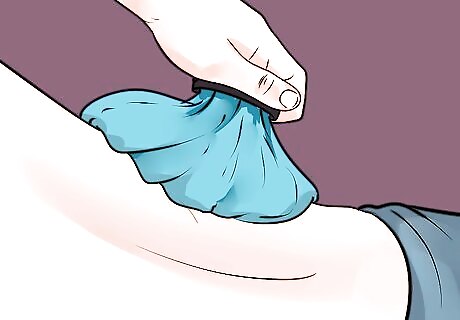
Apply ice. After stretching, applying ice can be an effective way to reduce pain and swelling associated with piriformis syndrome. To use ice, wrap an ice pack or bag of frozen vegetables in a thin cloth or paper towel. Then place the ice pack on the most painful area. Leave the ice pack in place for about 20 minutes and then remove it. Wait for at least 2 hours to reapply.
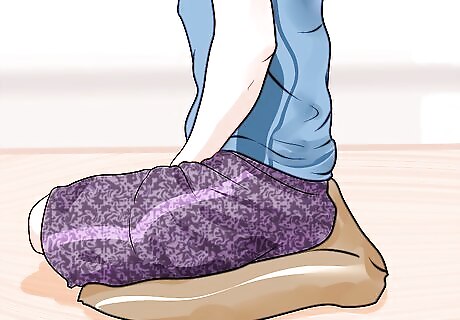
Make yourself comfortable. Piriformis syndrome may be agitated by sitting or standing in certain positions, so you will need to make sure to avoid these positions. Do what you need to do to make yourself comfortable while sitting and standing. Try sitting on a cushion or comfortable chair if sitting feels painful to you. If you have trouble standing, consider using crutches or a cane to help support your weight while you stand.
Considering Medical Treatment Options

Get a diagnosis. Getting a diagnosis is the first step in treating any condition. There are no tests to confirm whether or not you have piriformis syndrome, so your doctor will perform a physical exam and ask you to explain all of your symptoms. Your doctor may also want you to have an MRI to rule out any other possible causes of your symptoms.

Do physical therapy. A physical therapist can design a program developed to meet your specific needs and guide you through exercises that will efficiently stretch your muscles and relieve pain. Get started early with physical therapy to get the greatest benefit.
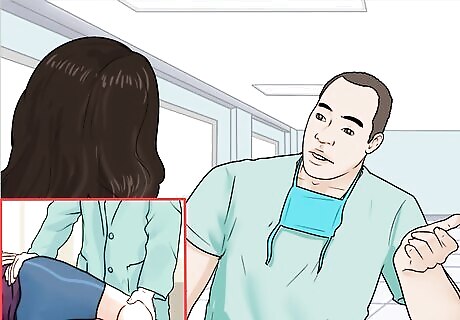
Consider alternative therapies. Massage and trigger point therapy may offer relief for piriformis symptoms. In some cases, piriformis symptoms might actually be caused by trigger points, or muscle knots. These knots may be found in the piriformis or gluteal muscles, and the pressure they cause can lead to pain at the site of the knot or even elsewhere on the body. Locate a health professional who is trained in trigger point therapy (a doctor, massage therapist, physical therapist) and see if this is the source of your pain.

Talk to your doctor about medications. Your doctor may recommend certain over-the-counter and prescription medications to help you deal with pain. For example, some doctors may prescribe a muscle relaxant to help ease the discomfort of your piriformis syndrome. Ask your doctor about taking ibuprofen or naproxen for occasional piriformis pain as well.

Ask your doctor about injections. Some injection treatments have been found to be helpful in cases of piriformis syndrome. Ask your doctor if an injection treatment might be useful in your situation. The two main injection treatments for piriformis syndrome include anesthetic injection and Botox injection. Anesthetic injection. A pain relieving substance such as lidocaine or bupivacaine may be injected into the piriformis to help relieve pain. Botox injection. Botox injections have also been found to be effective in reducing pain and discomfort from piriformis syndrome.
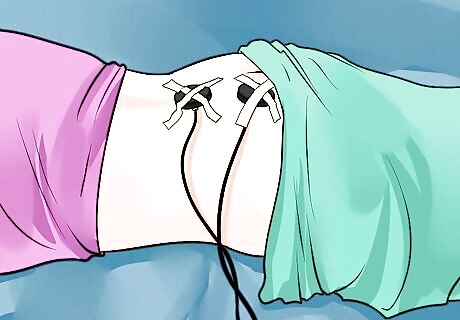
Consider electrotherapy. Electrotherapy has been found to be effective in some cases of piriformis syndrome. Ask your doctor or physical therapist about the possibility of using Transcutaneous Electrical Nerve Stimulation (TENS) or Interferential Current Stimulator (IFC) to help treat your piriformis syndrome.
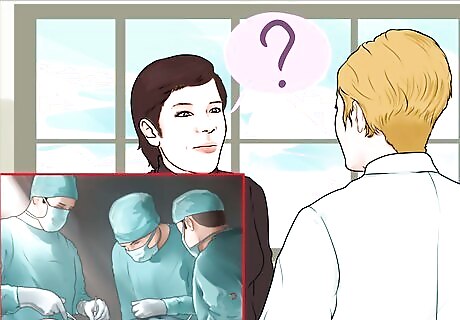
Discuss surgery with your doctor as a last resort. Surgery has provided long-term pain relief for some sufferers of piriformis syndrome, but as with any surgery, there are some serious potential side effects to this treatment. It is best to exhaust all of your other treatment options before looking into surgery for piriformis syndrome.
Preventing Piriformis Syndrome
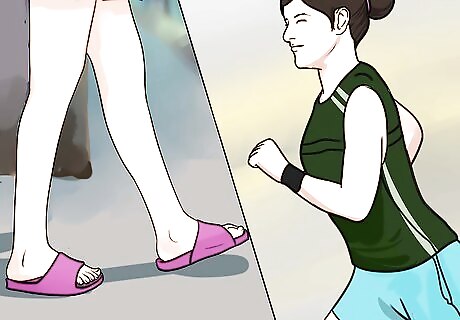
Warm up before you exercise. Taking five minutes to warm up your muscles can help to prevent injury and it is also a good way to prevent piriformis syndrome. Make sure that you allow your body some time to warm up before you do anything too strenuous. To warm up, just do a lighter version of the type of exercise you are about to perform. For example, if you are about to go for a run, spend five minutes walking briskly.

Stick to flat surfaces when you run and walk. Uneven surfaces can cause you to strain your muscles more than flat surfaces do. To avoid this potential risk factor, choose flat surfaces to exercise on. For example, if you live in a hilly area, go to a track to walk or run.

Stretch after you exercise. Muscles tighten up when we exercise, so it is necessary to stretch after a workout to loosen them up again. After you finish exercising, take a few minutes to stretch all of your major muscle groups. Stretch your neck, arms, legs, and back.

Stand up straight. Poor posture may also lead to the development of piriformis syndrome, especially during exercise. Take extra care to stand up straight and tall when you are walking or running. Pay attention to your posture all other times as well.
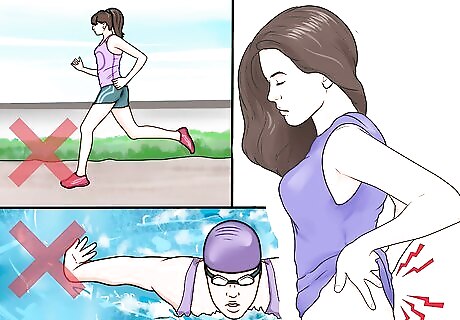
Stop exercising if it causes pain or discomfort. Overdoing it may lead to the development of piriformis syndrome, so it is important to know your limits. If you begin to feel pain and/or discomfort during your workout, then stop and take a break. If the pain continues after you resume, then do not do any more exercise. Rest and wait for the pain to subside. If it does not subside, then call your doctor.
Avoid sitting so you're rotating one hip more than the other. If you tend to shift to one side while you're sitting, a lot of times your piriformis muscle will get tight. That puts tension on your sciatic nerve and sends pain signals down your leg. If you normally sit this way, try doing stretches to help alleviate your discomfort.




















Comments
0 comment